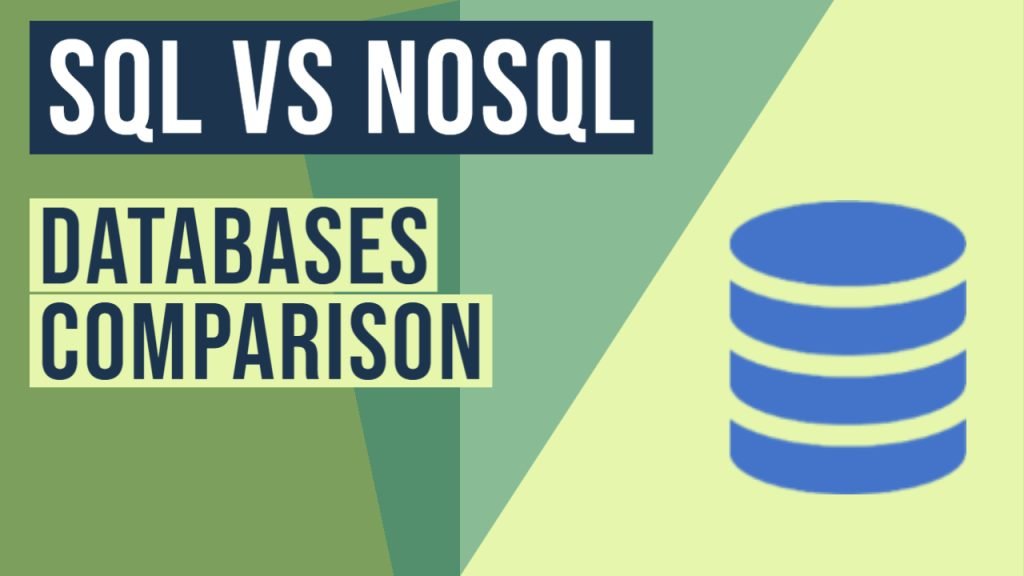SQL vs NoSQL Databases
In this article, we will explain the differences between SQL vs NoSQL Databases.
You can also check this tutorial in the following video:
1. Introduction
We will check the relational (SQL) and non-relational (NoSQL) data structures. While both are viable options, there are key differences between the two that users must keep in mind when making a decision.
2. Differences between SQL and NoSQL
2.1 Database Architecture
At the most basic level, the biggest difference between these two technologies is that SQL databases are relational, while NoSQL databases are non-relational.
2.2 Database Schema
SQL uses structured query language and has a pre-defined schema for data. It’s perfect for complex queries, but can be too restrictive. You have to use predefined schemas to determine your data structure, so this process requires significant upfront preparation. NoSQL databases have dynamic schemas for unstructured data, and the data is stored in many ways. You can use column-oriented, document-oriented, graph-based, or KeyValue. You can create documents without having to first define their structure, the syntax can vary from database to database and you can add fields dynamically
2.3 Database Scaling
SQL databases are vertically scalable in most situations. You’re able to increase the load by adding more CPU, RAM, or storage capacity. NoSQL databases are horizontally scalable. You’re able to handle higher traffic by sharding. Horizontal scaling has a greater overall capacity than vertical scaling, making NoSQL databases the preferred choice for large and frequently changing data sets.
3. What are the Benefits of NoSQL Databases?
NoSQL is better for unstructured data like documents or JSON. You can also handle large volumes of data at high speed with a scale-out architecture, store unstructured, semi-structured, or structured data, enable easy updates to schemas and fields, and be developer-friendly. This also means that NoSQL databases offer consistency in performance and scalability.
4. What are the Drawbacks of NoSQL Databases?
NoSQL databases don’t have the reliability functions which Relational Databases have (basically don’t support ACID).
In order to support ACID, developers will have to implement their own code, making their systems more complex. This may reduce the number of safe applications that commit transactions, for example, bank systems. Also, NoSQL is not compatible with SQL. This means that you will need a manual query language, making things slower and more complex. NoSQL is very new compared to Relational Databases, which means that may have a lot fewer functionalities.
5. How to Try a NoSQL Database
Some of the most popular NoSQL databases are:
- MongoDB: The most popular open-source NoSQL system. MongoDB is a document-oriented database that stores JSON-like documents in dynamic schemas.
- Apache CouchDB: An open-source, web-oriented database developed by Apache. CouchDB uses the JSON data exchange format to store its documents.
- Apache HBase: An open-source Apache project developed as a part of Hadoop. HBase is a column store database written in Java with capabilities similar to those that Google BigTable provides.
- Oracle NoSQL Database: A proprietary database that supports JSON table and key-value datatypes running on-premise or as a cloud service.
- Apache Cassandra DB: A distributed database that excels at handling extremely large amounts of structured data. Cassandra DB is also highly scalable. Facebook created Cassandra DB.
- Riak: An open-source, key-value store database written in Erlang. Riak has built-in fault-tolerance replication and automatic data distribution that enable it to offer excellent performance.
- Objectivity InfiniteGraph: A highly specialized graph database that focuses on graph data structures. InfiniteGraph, implemented in Java, is useful for finding hidden relationships in big data.
The best NoSQL database to choose to get started is MongoDB. There are many examples of hybrid deployments of MongoDB and Oracle Database. The flexible data model that MongoDB uses is a good fit for product catalogs because catalogs typically include multiple products with different attributes. Also, Oracle Database is generally used for checkout systems because they require complex transactions.
6. Conclusion
We will explain the differences between SQL vs NoSQL Databases.
As enterprises shift to the Digital Economy, developers and operations teams have to build and maintain web, mobile, and IoT applications faster and faster, and at a greater scale. Flexible, high-performance NoSQL is increasingly the preferred database technology to power today’s web, mobile, and IoT applications. With NoSQL, enterprises are able to develop with agility and operate at any scale.
If you want to learn more about SQL, check our SQL Tutorial for Beginners.
If you want to learn more about NoSQL Databases, check our NoSQL Tutorials.



